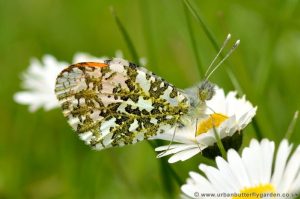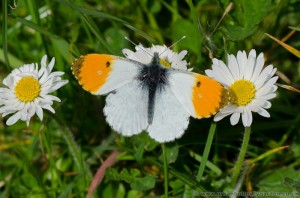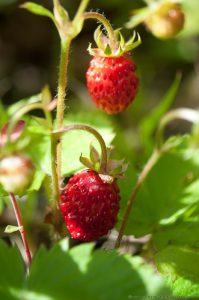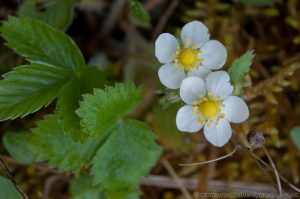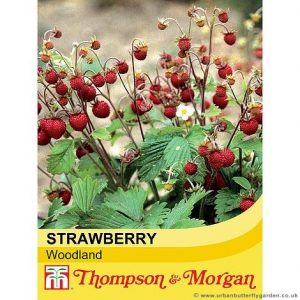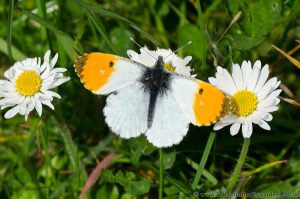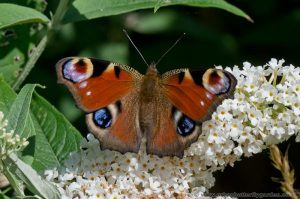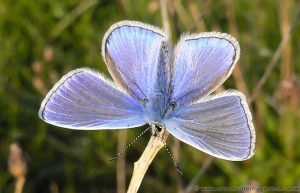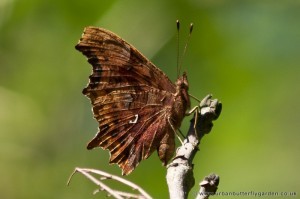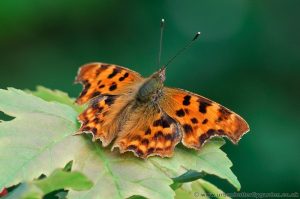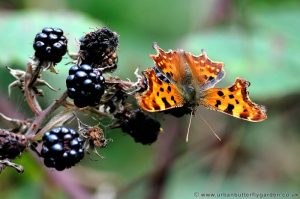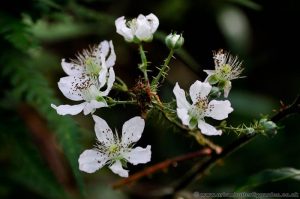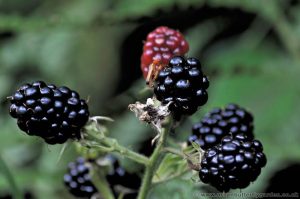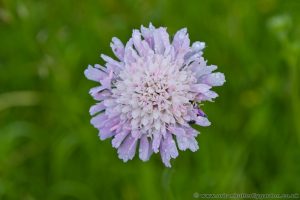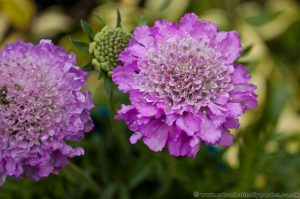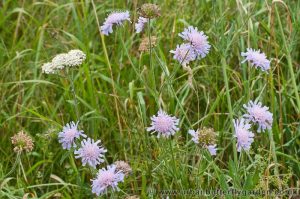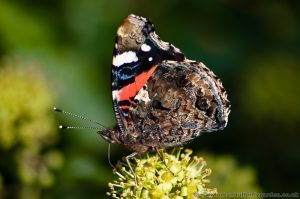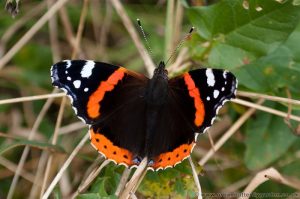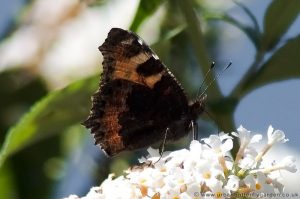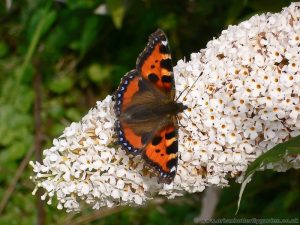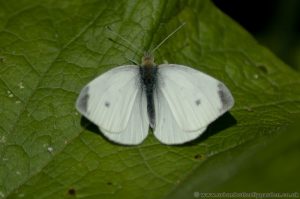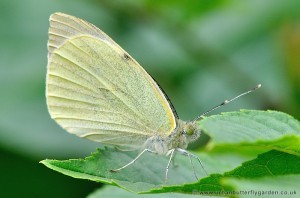A fast growing climber, Honeysuckle is seen by many as a traditional garden shrub, often seen in gardens growing up a trellis or trailing over walls and fences.
Honeysuckle flowers generally appear from June-August and vary in colour from creamy white, pink, red and light yellow. They are mainly trumpet shaped, and give off an unmistakable sweet scent, most noticeable late evening and at night.
The flowers are followed by bunches of red berries which ripen in Autumn and are often eaten by wild birds during the winter months.
Native Honeysuckle
Probably the most popular variety of honeysuckle is Lonicera periclymenum (Woodbine) a native species which grows wild in woodlands and hedgerows throughout Europe.
It is deciduous (loses leaves in Autumn) with particularly fragrant light yellow flowers flushed with pink/purple and may grow to a height of 5-6m.In Britain wild honeysuckle can sometimes be seen growing up trees in woodland, spreading amongst hedgerows, and other plants using then for support.
The leaves are grey – green and oval shaped.
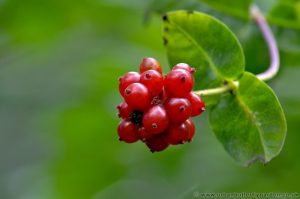
Honeysuckle (Lonicera periclymenum) red berries
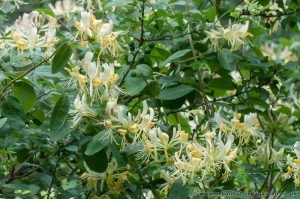
Common Honeysuckle (Lonicera periclymenum) Woodbine in flowering in Woodland, growing amongst Blackthorn and Wild Privet
Honeysuckle for the Garden
Honeysuckles grown specifically for the garden can vary in that, some are deciduous others are evergreen and semi-evergreen. The flowers also can be trumpets or funnel shaped, often forming clusters, although some can occur in pairs depending on the species. Traditionally scented, some Honeysuckles can also have little or no scent, but make up for this with masses of spectacular flowers.
Quick Information
- Name: Honeysuckle (Lonicera. Sp)
- Family: Caprifoliaceae
- Height: May grow up to 5m if supported.
- Position: sun or semi shade
- Care: Feed or water if needed, prune or shape if required in Winter or Spring
- Wild Honeysuckle (Lonicera periclymenum) is the primary food plant for the caterpillar of a rare British woodland Butterfly the White Admiral (Limenitis camilla).
- Photographs: 8th – 15th August 2010
Popular Garden Honeysuckle and Varieties
Honeysuckle ‘Scentsation’
(Lonicera periclymenum)
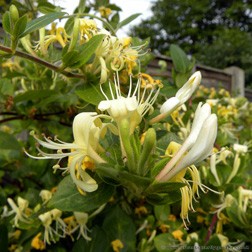
Honeysuckle ‘Scentsation’ Lonicera periclymenum
Pale yellow and ivory flowers from midsummer to September, and a powerful sweet perfume, make Honeysuckle ‘Scentsation’ a delightful garden climber. It is a great plant to let trail over a garden wall, or train up a fence or trellis. After flowering the glossy red berries are an attractive food for garden birds in late summer
- RHS Perfect for pollinators: Yes
- Type: Hardy Shrub
- Colour: Pale yellow and Ivory
- Flowering Period: July, August, September.
- Position: sun or semi shade.
- Great For: scented gardens, woodland garden, Fences and Walls
Available in a range of pot sizes from 3 ltrs, for more information find it here at Thompson & Morgan
Honeysuckle ‘Belgica’
(Lonicera periclymenum)
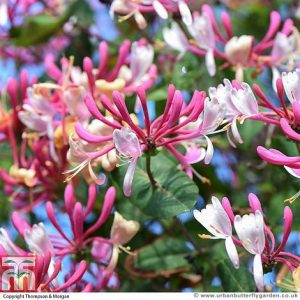
Honeysuckle ‘Belgica’ a colourful sweet scented climber
A hardy climber Honeysuckle ‘Belgica’ has sweet scented flowers that begin white and gradually turn yellow with rich red streaks. Early Dutch Honeysuckles usually flower early summer and often follow up with a second flush of blooms in late summer, September to October. The glassy red berries that are loved by garden birds.
- RHS Perfect for pollinators: Yes
- Type: Hardy Shrub.
- Colour: white, yellow, red.
- Position: sun or semi shade.
- Growing and Aftercare: Easy
- Soil: Moist, well drained – Most types
Available in a range of pot sizes from 3 ltrs, for more information find it here at Thompson & Morgan
Honeysuckle ‘Halliana’
(Lonicera Japonica)
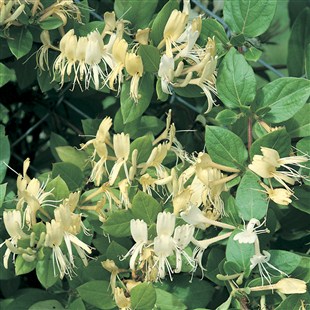
Lonicera Japonica Halliana (Honeysuckle)
Lonicera Japonica Halliana is an evergreen Honeysuckle that produces masses of creamy white and yellow very fragrant flowers, all spring and summer. Also known as Japanese Honeysuckle, Honeysuckle ‘Halliana’ is a vigorous climber and will rapidly make it’s way up a trellis or wall, plant in the garden near windows or doors to fully appreciate the wonderful scent.
- Also known as: Japanese Honeysuckle
- Type: Full Hardy climber
- Planting Position: Full sun to partial shade
- Flowering: May to September
- soil type: Most well drained
- Height: 600cm
- A great plant for attracting wildlife to your garden
See more information about Honeysuckle ‘Halliana’ Click Here to Visit Jersey Plants Direct
Honeysuckle ‘Dropmore Scarlet’
Lonicera x brownii
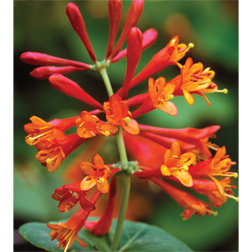
Honeysuckle ‘Dropmore Scarlet’
A robust climber with long, red and orange trumpet-shaped flowers that continue to bloom from July through to September. Although unscented, Honeysuckle ‘Dropmore Scarlet’ makes up for this with masses of colourful flowers, vigorous growth and semi-evergreen blue-green foliage, ideal for hiding an unsightly area of the garden like a wall or fence, or trailed through a large mature tree.
- Type: Hardy shrub
- Colour: Orange and red (Scarlet Trumpet Honeysuckle)
- Flowering: July, August, September
- Planting Position: Full sun to partial shade.
- Soil Type: In fertile, moist, free draining soil.
- Height and Spread: 4m (13′), 2m (7′).
- Ideal For: Wildlife garden, Cottage garden, walls and trellis
For More Information on this climber you can visit Thompson & Morgan Here
Back to Top of Page

